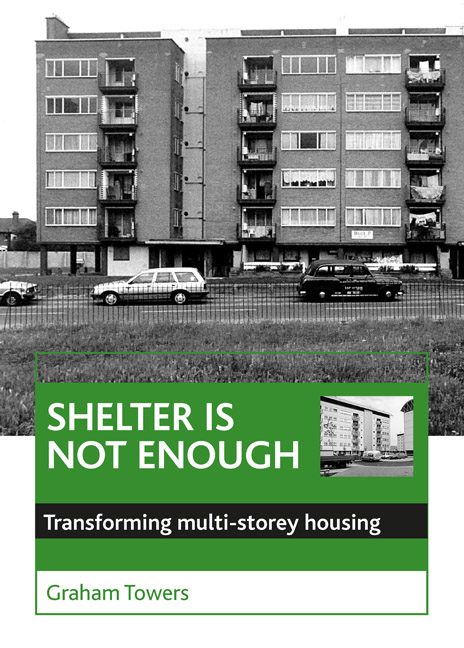Book contents
- Frontmatter
- Contents
- List of figures and tables
- Dedication
- Preface
- Foreword
- one Introduction
- two Forming the multi-storey legacy
- three Politics, economics and housing form
- four Social stigma and community action
- five Redeeming the estates
- six Facets of regeneration
- seven Building a model framework
- eight Prospects for transformation
- nine Ending the estate syndrome
- ten On broader horizons ...
- Bibliography
- Appendix: Case study research
- Index
seven - Building a model framework
Published online by Cambridge University Press: 05 July 2022
- Frontmatter
- Contents
- List of figures and tables
- Dedication
- Preface
- Foreword
- one Introduction
- two Forming the multi-storey legacy
- three Politics, economics and housing form
- four Social stigma and community action
- five Redeeming the estates
- six Facets of regeneration
- seven Building a model framework
- eight Prospects for transformation
- nine Ending the estate syndrome
- ten On broader horizons ...
- Bibliography
- Appendix: Case study research
- Index
Summary
Analysis of the history revealed the shortcomings that were built into the multi-storey legacy. These inadequacies made the subsequent problems in use understandable, if not inevitable. Early attempts to remedy these problems were often inadequate, providing partial solutions or superficial upgrading. More recent approaches did focus on fundamental issues but, as the seven ‘facets’ identified in the previous chapter showed, they often revolved around a particular theoretical concept which weighted or distorted the solutions which emerged. Many of the resulting schemes achieved, at best, only limited success. In the theoretical concepts there was also a clear division between approaches that focused on ‘design’, stressing the importance of physical changes and technical innovations, and those that focused on ‘management’ issues, emphasising the needs of residents and the value of positively engaging them.
What emerged from the analysis of practice is that there are several distinct aspects to any improvement scheme, all of which may be important. In implementing the regeneration process there are three separate groups of people who have key roles to play if a scheme is to succeed. These are, first, the designers – architects and engineers who define and implement the physical and technical changes; second the managers – this includes not only the project managers and development officers but also the estate management and maintenance staff; third, the residents of the estate. Many problems might have been avoided if the potential residents had been consulted when the estates were built. It is now clear that their engagement is essential if successful solutions are to be found, implemented and sustained in the longer term.
Each of these groups has a different perspective on the regeneration process. In defining a model framework the aim is to draw together the essential components which have emerged from practice and to balance the interests and the respective roles of the three groups whose engagement is essential. The model has seven components:
A Participation: the demand for the participation of residents in design and development decisions first emerged from community action in the 1970s. It was absorbed, from the first, into the processes developed to regenerate multi-storey housing In the seven facets described in Chapter Six, participation is a common thread. Even in the most predetermined or technically oriented schemes the need to seek tenant agreement was recognised.
- Type
- Chapter
- Information
- Shelter Is Not EnoughTransforming Multi-Storey Housing, pp. 137 - 154Publisher: Bristol University PressPrint publication year: 2000

